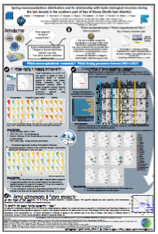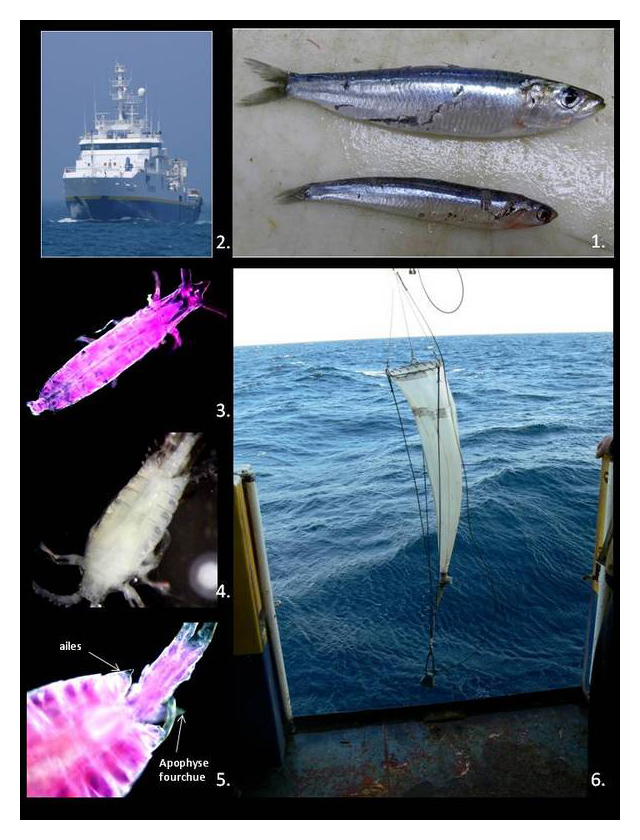Dessier Aurélie
Cet article est disponible en français

- Team : AMARE BIOFEEL
- aurelie.dessier@univ-lr.fr
- Tél. : +33 (0)5 46 45 87 26
Key-words : Sardina pilchardus, Engraulis encrasicolus, Prey (mesozooplankton) – Predator (fishes) relationship, spatial and temporal relationship, Bay of Biscay, heavy metals, stable isotope analyses, energy density measures and parasites analysis
PhD supervisor :
Christine DUPUY, Professor, University of La Rochelle, LIENSs UMR 7266 and Paco BUSTAMANTE, Professor, University of La Rochelle,, LIENSs UMR 7266.
Team : DYFEA
Funding : PhD grant of region Poitou-Charentes
Spatial and temporal variations of prey-predator relationships in two small pelagic fish in the Bay of Biscay: the European anchovy Engraulis encrasicolus and the European sardine Sardina pilchardus
In 2010, 696 140 tons of fishes, crustaceans and molluscs were unloaded in France for a turnover of 1.4 billion euros (FAO 2012). France is also ranked fourth in Europe in terms of tonnage of fish catchments. Roughly two thirds of French fishery occurs in the North-East Atlantic, including the Bay of Biscay. To maintain fish stocks, knowledge of trophic connections between different marine ressources is essential. This topic is studied in the European program REPROdUCE (in collaboration with the EMH laboratory of IFREMER). Precisely, the UMR LIENSs is in charge of studying trophic relationships between microzooplankton, mesozooplankton and the two pelagic fish Sardina pilchardus and Engraulis encrasicolus. These species are targeted by an important fishery activity in the Bay of Biscay and are also two key species of the pelagic trophic network. This study is based on two sample campaigns led by IFREMER: 1) the PELGAS campaign monitoring spring pelagic stocks of European anchovy and sardine in the Bay of Biscay, and 2) the EVHOE campaign monitoring Autumn demersal and benthic fishes stocks of Western Europe.
Aims of the Ph.D. :
- Status of stocks: to study spatial and temporal variations of prey and predator stocks, in order to understand their interannual dynamics, under the action of abiotic parameters (temperature, salinity, etc.). The PELGAS campaigns have been carried out since 2000, allowing studies of their (prey stock) evolution over the last decade.
- Trophic ecology of predators: different tools will be used in parallel; heavy metals, stable isotope analyses, energy density measures and parasitological approach.
- To determine a Trophic Enrichment Factor (TEF) through an experimental approach with Sardina pilchardus.
1. Sardina pilchardus (at the top) and Engraulis encrasicolus (below). Source: L.Hemery
2. Thalassa, Ifremer ship. Source: @ifremer
3. Rhincalanus sp (Giesbrecht, 1988), copepods from "Golfe de Gascogne". Source: A.Dessier
4. Candacia armata (Boeck, 1872 ), copepods from "Golfe de Gascogne". Source: A.Dessier
5. Anomalocera patersoni (Templeton, 1837), copepods from "Golfe de Gascogne". Source: A.Dessier
6. Plancton net WP2. Source: J.P Leauté.
Scientific communication :


Publications :





